| Irish Famine Memorial sitting at Macquarie Street was a highlight of an International Irish Famine Commemoration taking place last weekend in Sydney. Irish Famine... How many of us have heard of it? When did it happen and why? And what has it got to do with Australia? How many of us have noticed the Memorial right at the heart of the City – and if so, have we wondered whether it is somehow related to our Polish-Australian heritage?
Let’s put it straight: the Great Irish Famine occurred in the years 1845-1852. Over one million of Irish destitute people died either of starvation, famine, fever or dysentery. Over 1.5 million migrated to America, UK and... to Australia. So, we do have a link to Australia. Of these Irish Famine refugees a remarkable contribution came to Australia on eleven ships and consisted of 4114 orphan girls aged 14 to 19. This part of Irish migration was under a British scheme devised by Earl Grey, the Secretary of State for the Colonies. The Irish Famine Memorial at the Hyde Park Barracks Museum commemorates these girls and the events.
Think of 1845. Poland did not then exist on the map of the world. Just like Ireland was colonised by the British, Poland was partitioned by neighbouring Russia, Germany and Austria. We, at Kosciuszko Heritage Inc, recall also this year as the time when Paul Edmund de Strzelecki was awarded a Founder’s Gold Medal of the Royal Geographic Society. That was about a year after he left Australia and settled in London, publishing results of his geological and exploratory work in his famous book Physical Description of New South Wales and Van Diemen’s Land. As we all know well, Strzelecki had discovered and became the first documented conqueror of the highest peak of Australia. He named it after our hero, the international fighter for democracy, freedom and equal rights, General Tadeusz Kosciuszko.
What many of us may not know is that soon after this award, Strzelecki left cosy London and headed to the starving Ireland to lead a voluntary (non-government) British support to those in a desperate need. Contemporary documents indicate that his deeds, leadership and original thinking contributed to saving of more than 200,000 Irish children from starvation death. So, we Poles, also have a link to the Famine!
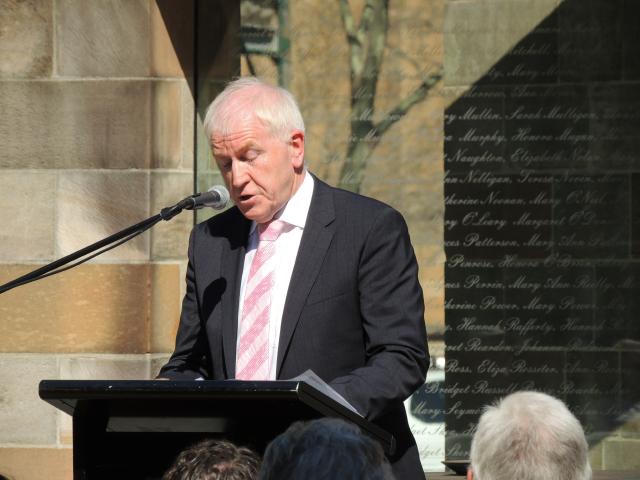
Minister Deenihan speaking |
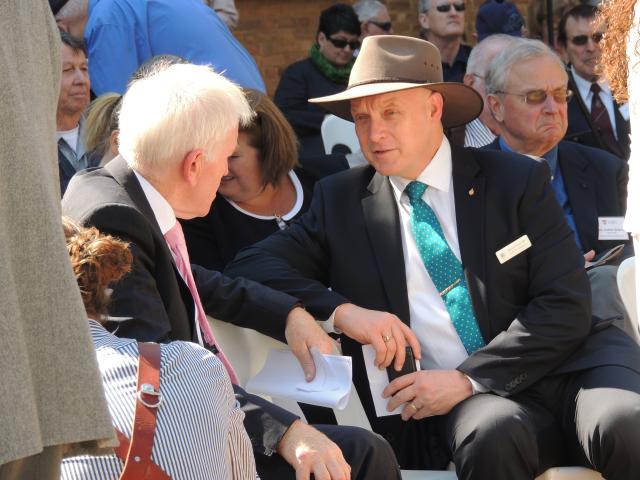
Minister Deenihan chatting to Hon. Bryan Doyle |
The direct trigger to the famine was a potato blight epidemic, which came to Europe from America and spread quickly covering half of the continent. However Ireland suffered most. Why? Well, many resources tend to blame a Chance, or Destiny, or the Irish, but in fact it has been a disaster just waiting to happen. Ireland was then colonized by the UK and the law enforced on the country by the British Parliament deprived most of the Irish people of the property and legal rights, and pauperised the peasants. Ireland was at that time exporting all sorts of crops, mainly wheat, but potato was the only food available to the poor. Like in many other cases (e.g. Ukraine in 1930’s, under the Soviet Union regime), the Administration and the Governing Powers failed the People.
The English Quaker and MP John Bright was an arch critic of the Irish land laws. He recorded Strzelecki’s views at that time. If the Devil himself exercised all his ingenuity to invent a scheme which should destroy the country, he could not have contrived anything more effectual than the principles and practices upon which landed property has been held and managed in Ireland.
Why is it important to recall it today, in the 21st Century? Just think of the European crisis, Greece and (again) Ireland’s austerities, global money printing and debt-based monetary policies. Like in 1845, due to a poor law and a bad economic system, there are disasters waiting to occur. Even today we are not immune of these 'rare' and 'unexpected' events.
This year Commemoration (for the first time held in Australia) was a memorable event. It has been co-organized by the Irish Government. Irish President sent his Message and the event was attended by the Irish Minister for Arts, Heritage and the Gealtacht, Mr Jimmy Deenihan TD, who is also a Chairman of the National Famine Commemoration Committee in Ireland. The Commemoration has been hosted by the Australian Parliamentary Friends of Ireland and attended by a number of Australian dignitaries: the Governor of NSW, Professor Marie Bashir AC CVO, Attorney General, Minister of Justice, The Hon Greg Smith and Hon Brian Doyle representing Premier Barry O’Farrell, Members of Parliament, the Irish Ambassador and the Vice-Consul.
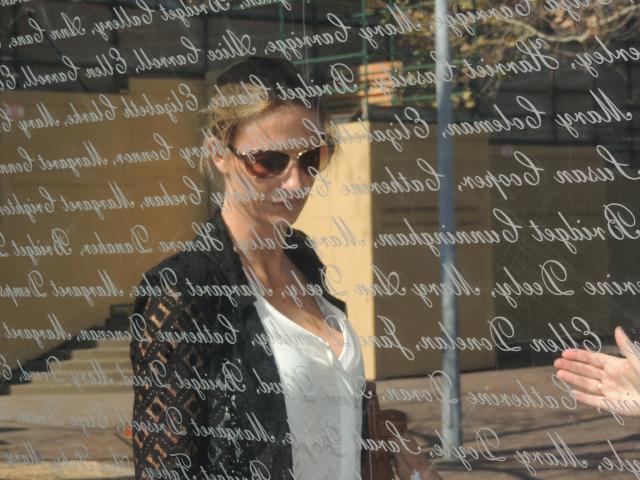
Seing through the glass wall of the Monument |
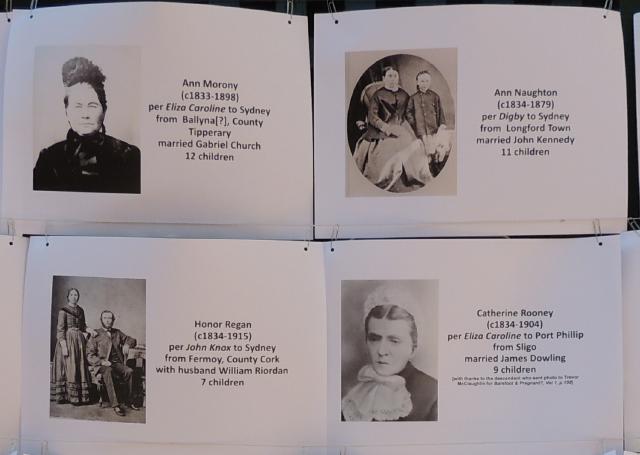
Orphans turned Mothers. Photo Exhibition |
Since 2000 the Irish community holds an annual gathering on the last day of August to remember the famine victims in Ireland as well as surviving immigrants in the Irish Diaspora. And also, as pointed out on Saturday by Minister Deenihan, the Commemoration is to remember those who, against the dominating trends, have been helping those trapped in the disaster. I have to mention here our strong support to Felix Molski's idea: to create a Roll of Honour, a list of those noble people, like Strzelecki, who were helping the Irish in times of calamity. The Irish Yad Vashem list of ‘The Righteous Among The Nations’, one could say. I believe it is important to all of us and to the coming generations to prove that our World is not forgetting the righteous. It is important for improving our World and to not loose from sight the positive aspects of our deeds.
We, at Kosciuszko Heritage, are proud to note that our contribution to the 2013 Commemoration consisted of giving out to all participants a DVD produced by Felix Molski and Ernestyna Skurjat-Kozek from Kosciuszko Heritage Inc about Strzelecki’s way of saving the Irish children from death by starvation. The humanitarian deeds of Strzelecki have been largely forgotten, so it seems it has been the right moment in time and place to recall these Australian and Polish connections with the Famine.
During Commemoration celebrations we have met a number of interesting and valuable people. However, to avoid overlapping with Felix, I am referring for further details to his own account of the event.
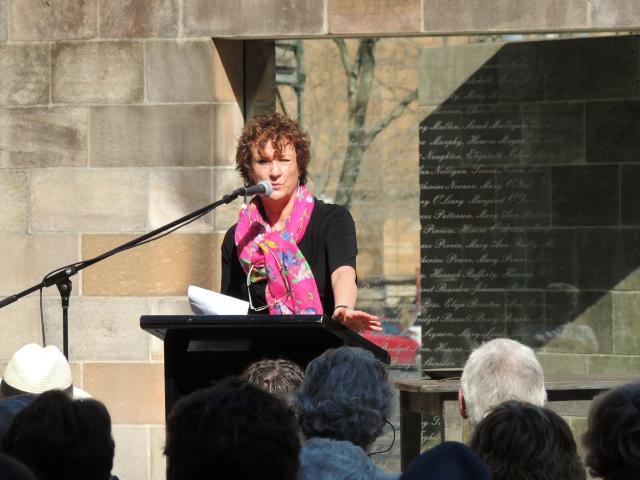
Dr Perry McIntyre, the event organiser |
Let me conclude these reflections with several interesting facts I have learned about during the events. It is estimated that the 4114 Famine Orphan Girls, who migrated to Australia with the support of the British authorities, now belong to family trees of about 25% of today’s Australia population! One of the mentioned girls has had 12 children and now almost 1000 Australians hold her in the family tree. There are many Australians who have two Famine Orphan Girls in their family tree, but only one person is known, and attended the Commemoration, who has three Famine Orphan Girls in her family tree.
I also learned that for more than hundred years the Irish community was ashamed to even mention the Great Famine, and that they came from such a poor background. Now, they know that it is important to know the truth about the History, it may help to avoid the old mistakes (not necessarily their own) and traps made by others. I am a Mathematician and a Statistician. For me, neglecting a History in nation education or in governing, is like building a forecasting model without any regard to the available past data. It’s a disqualifying absurd. And forging data to distort the official picture is just a cheating and may have tragic consequences. A good question is: cheating whom?
Andrzej Kozek
Kosciuszko Heritage Inc.
31 August 2013
Click here to view the gallery
| 

